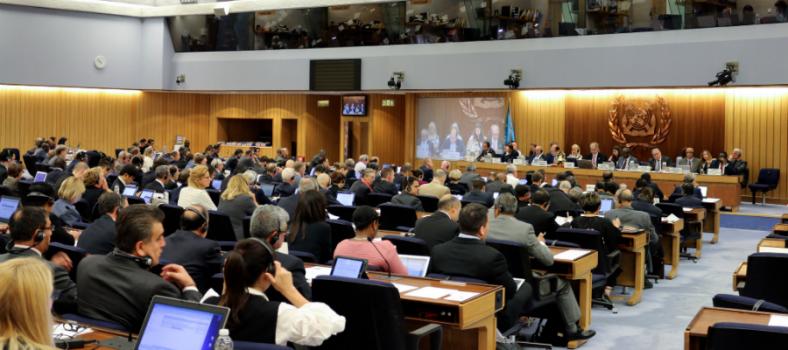
A proposal to apply the same sulphur verification procedure to samples taken from ships as the one prescribed by MARPOL Annex VI for the representative fuel oil sample taken at the time of delivery (the MARPOL sample) received wide support at the 71st session of the Marine Environment Protection Committee last week.
The proposal, put forward by China, noted: “Onboard sampling is an essential tool to verify the sulphur content of the “fuel oil used on board ships”. Some port States, such as the European Union (EU) States, the United States and China, have already started to sample fuel oil being used on board ships. However, there is only a fuel oil verification procedure for the MARPOL samples, as required by appendix VI of MARPOL Annex VI. As for in-use fuel oil samples, no harmonized verification method and procedure has been developed.”
MEPC 70 approved MEPC.1/Circ.864 on Guidelines for onboard sampling for the verification of the sulphur content of fuel oil used on board ships, as the Committee recognised the need to establish an agreed method for sampling to enable effective control and enforcement of Regulation 14 of MARPOL Annex VI. Regulation 14 stipulates the relevant sulphur limits applying to fuel oils used by ships.
China proposed that regulation 18 of MARPOL Annex VI be amended to stipulate that the verification procedure for in-use fuel oil samples should be consistent with the procedure of the MARPOL sample, and that appendix VI of MARPOL Annex VI be amended to make it suitable for both the MARPOL sample and in-use fuel oil sample.
In discussions, several member states and shipping organisations supported the Chinese proposal, in particular with regard to using the same sulphur verification procedure for both in-use and MARPOL samples, but some practical and regulatory concerns were raised.
One delegation noted that Annex VI has no requirement to take in-use samples, and seeing as the taking of in-use samples are covered by guidelines, the verification procedure should also be addressed in a guideline.
Another delegation noted that any amendment should not be to Regulation 18, which relates to fuel oil quality as delivered to ship, but rather under regulation 14, because the in-use sample will be a physical representation of the fuel that the ship is actually burning.
IBIA also commented on the Chinese proposal at MEPC 71, supporting the observation in China’s proposed amendment to appendix VI of MARPOL Annex VI that the in-use fuel oil sample shall be used to verify the sulphur content of the fuel oil being used on board ships, while the representative fuel oil sample taken at the time of delivery, which we know as the MARPOL sample, shall be used to verify the sulphur content of the fuel oil supplied to a ship.
IBIA also supported China’s observation that seeing as appendix V of MARPOL Annex VI requires that the sulphur content of the MARPOL sample should be tested in accordance with ISO 8754:2003, the same test method should be applied for testing of in-use samples.
“As for the issue of the sulphur verification procedure for the in-use sample, we believe more work is needed because if it is applied as proposed, there is a risk of ships being falsely found ‘guilty’ of non-compliance. I’m not going into detail on that now but we think that there is work to be done to address this,” IBIA told MEPC 71.
Following the discussion in plenary, it was agreed that the Chinese paper should be forwarded to the next session of the Sub-Committee on Pollution Prevention and Response (PPR 5) for consideration.
The instruction from MEPC 71 to PPR 5 was that the proposal from China will be considered under its agenda item on amendments to regulation 14 to require a dedicated sampling point to draw fuel oil samples on board ships.
Source and more information: IBIA


